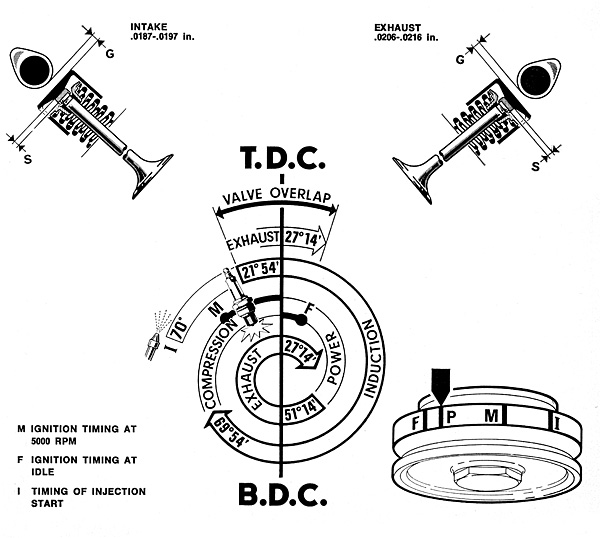Camshaft and Valve Timing Terms
 Valve Duration is the length of time that the valves are held open, measured in degrees of crankshaft rotation. Valve lift is the amount that the valves are opened, usually expressed in millimeters. Increased duration will yield greater power at higher RPMs with a reduction of low speed torque. Greater valve lift, without increasing duration, will yield more power without much change in the nature of the power curve. You can get some increased duration by tightening valve clearance.
Valve Duration is the length of time that the valves are held open, measured in degrees of crankshaft rotation. Valve lift is the amount that the valves are opened, usually expressed in millimeters. Increased duration will yield greater power at higher RPMs with a reduction of low speed torque. Greater valve lift, without increasing duration, will yield more power without much change in the nature of the power curve. You can get some increased duration by tightening valve clearance.
Overlap refers to the time that both the intake and exhaust valves are opened at the same time. When the intake valve is opened before the exhaust valve closes, there is some scavenging effect in which the rush of the exhaust out of the cylinder will suck a little more of the intake charge into the cylinder. A little overlap maintains good low end performance while increasing mid and upper RPM power. Lots of overlap tends to move the power higher in the RPM band. There would also be a resulting loss in fuel economy because some of the intake charge would be lost out through the exhaust.
Camshaft lobe center refers to the position of the crankshaft when the camshaft lobes for the number one cylinder are at their maximum opening; hence the cam timing. Cam timing can be altered to change the torque characteristics of your engine. Generally, retarded timing, down to about 110 degrees will result in better low-end response. Retarding beyond 110 degrees will cause the idle to suffer.
Advanced cam timing, particularly above 98-degree centers, will help upper end response but low end will suffer. Most Alfas do best at around 102 degree lobe centers on both the intake and exhaust camshaft. If you are using performance camshafts but are not satisfied with low end response, try retarding (later opening) the intake cam. To accomplish this, rotate the intake cam opposite the direction of rotation when the engine is running. This will open the intake valve later relative to crankshaft/piston position.
The intake cam has the most effect on low end response and retarding the intake cam while leaving the exhaust cam alone may help (this results in less value overlap). On 1972-74 Alfas, when exhaust emissions were first beginning to get serious and before the advent of catalytic converters, the intake cam was retarded to help emissions at idle. With retarded intake cam timing, there is less scavenging but more efficient use of fuel for lower emissions. In 1975-76, the exhaust cams were advanced to further reduce overlap at low engine speeds for lower emissions. After 1976, catalytic converters were used to clean emission downstream from the engine and lobe centers were moved closer together for increased overlap to improve upper-end response and overall horsepower. In 1980, Alfa introduced a variable intake camshaft. From idle to 1650 RPM, the intake lobe center is set at 118 degrees, very retarded for good low end and minimun overlap for reduced emissions. Above 1650 RPM, the intake cam is advanced to 98 degrees for more efficent high RPM running.